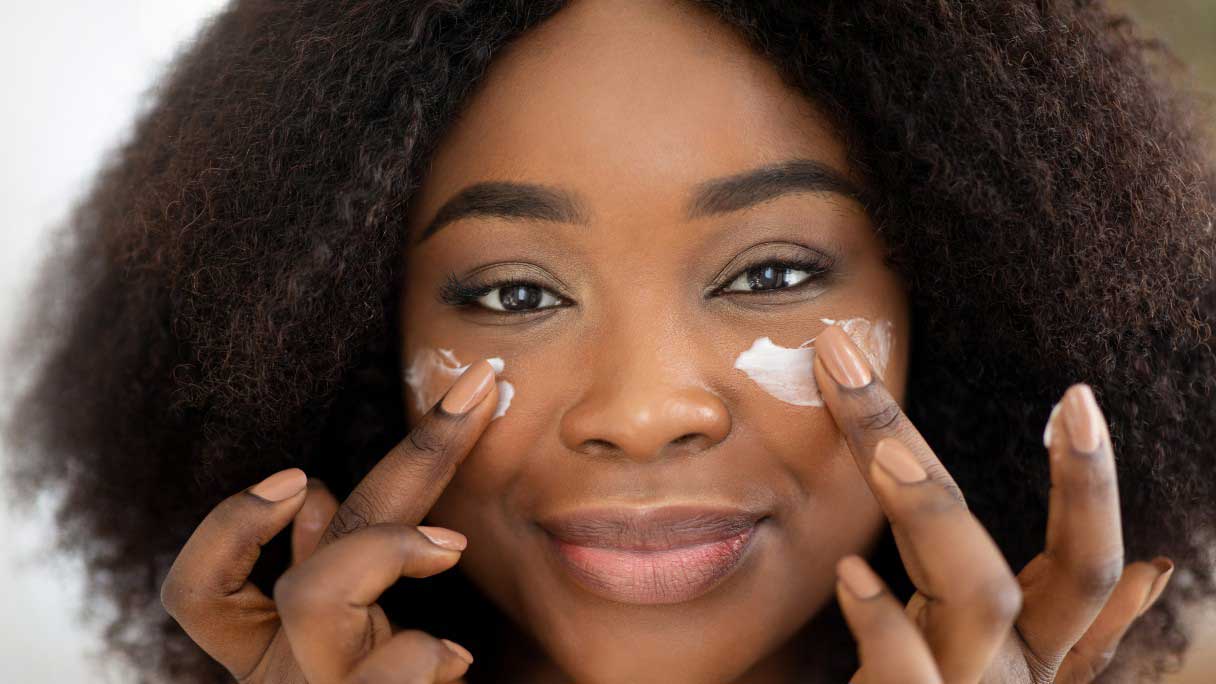Fine lines, wrinkles and sagging skin are all part of the natural aging process, and collagen, or lack of it, is often the culprit. The loss of collagen with age causes our skin to lose its firmness and nowhere is this more evident than in our face. You can't stop aging, but you do have options that can help rebuild collagen in your face for smoother, younger-looking skin.
What Is Collagen and How Does it Work?
Collagen is a protein that's naturally produced by our bodies and secreted primarily by connective tissue cells. It's strong and flexible and acts as a support structure to help skin maintain firmness and elasticity.
Collagen levels decrease with age and, unfortunately, there's no way to prevent this. The good news is that there are several cosmetic treatments that can rebuild or restore collagen.
Cosmetic Procedures to Restore or Increase Collagen
There's no such thing as a collagen treatment for facial skin, per se, but there are plenty of cosmetic treatments that can reduce the appearance of fine lines and wrinkles with increased collagen production as a side effect.
Here's a rundown of the different options for collagen restoration and how much they typically cost.
1. Creams and serums
Vitamin A and its derivatives, particularly retinol, are among the most effective substances delaying the process of aging. Retinol stimulates fibroblasts to synthesize collagen fibers (in other words, stimulates the activity of fibroblasts and increases their number), improves skin elasticity (removing degenerated elastin fibers) and promotes angiogenesis. Some studies indicate that retinol also enhances production of elastin fibers.
The benefits of retinol include improvement in fine lines/wrinkles, texture and pigmentation of skin. Seeing the effects of retinol may take weeks to months depending on the strength of the retinol. Prescription retinol works faster than over-the-counter derivatives. Additionally, the cost of retinol varies depending on if the retinol is purchased over-the-counter or if it is prescribed.
Retinols make the skin more sensitive to the sun so be sure to wear SPF daily. Retinols may be used in conjunction with other treatments that increase collagen production. Be sure to ask a medical professional when to discontinue retinol before undergoing a collagen-boosting procedure as this may increase sensitivity and irritation.
2. Microneedling
Microneedling is also sometimes called collagen induction therapy. This minimally invasive procedure is performed using a pen-like device that creates pinpoint-sized wounds in the skin. This encourages your body to produce more collagen in order to repair the injured skin.
The holes made in the skin are so small that they shouldn't be noticeable after the procedure. A local anesthetic is applied beforehand to minimize discomfort. This treatment may also be combined with topical application of PRP (see below) to enhance results.
The average cost for facial microneedling is around $300.1
3. Platelet rich plasma (PRP) therapy
PRP therapy is also known as the “vampire facelift." While this collagen treatment involves a little more than your average day spa service, it's not invasive, nor does it involve an actual facelift… or vampires.
This is a three-step, anti-aging cosmetic treatment for the face that uses your blood to naturally stimulate new collagen and tissue growth:
- A small amount of blood (two to four tablespoons) is drawn from a vein in your arm.
- The blood is placed in a machine that separates the platelet-rich-plasma from the other components in your blood.
- The plasma can be topically applied after a microneedling procedure or injected into your face.
The average cost of PRP is $981.2
4. Dermal and facial fillers
Dermal and facial fillers injected into specific areas of the skin, like facial wrinkles, stretch collagen producing cells while adding volume to the skin for a smoother, more youthful appearance.
There are different types of fillers, such as hyaluronic acid (Juvederm®, Restylane®), calcium hydroxylapatite (Radiesse®), collagen and polymethyl methacrylate (BellaFill®) or poly-L-lactic acid (Sculptra®). Results can last from six to 24 months, depending on the type of filler and area injected.
The cost also varies significantly between the different types of fillers, from $466 to $2,914. Fillers that use a person's fat fall on the higher end of that range.2
5. Skin resurfacing lasers
Skin resurfacing lasers create controlled damage to the skin which encourages the growth of new collagen-producing cells.
Laser skin resurfacing treatments fall into two categories:
- Non-ablative, which doesn't injure the surface of the skin, is less expensive and only requires a topical numbing agent, if desired.
- Ablative and fractionally ablative treatments penetrate both the superficial and deep layers of the skin and usually require the use of local anesthetic injections, oral pain medication or IV sedation to keep you comfortable.
Read our article about ablative vs non-ablative treatments for a more in-depth comparison.
The average cost of non-ablative treatment is $1,445. Ablative treatment is more expensive, with an average cost of $2,509.2
6. Chemical peels
Chemical peels use acid solutions to exfoliate skin cells, which can help stimulate collagen growth.
Chemical peels can be performed using solutions of varying strengths for results that range from superficial to deep.
You'll be able to see the results of your chemical peel once your skin heals. Healing time ranges from one to 21 days, depending on the strength of the chemical peel.
The average cost of a chemical peel is $519.2
How to Rebuild Collagen in the Face Naturally
You can help boost your body's collagen production naturally through foods and supplements. The foods that help you increase your body's collagen also offer health benefits that can translate to looking and feeling your best.
While these supplements may help maintain collagen levels in the skin, taking supplements will not result in the same outcome as one of the medical treatments listed above.
Protein and vitamin C
Proteins provide amino acids that can help with collagen production. They also help build muscle. Vitamin C also plays a role in making collagen and also happens to help boost the immune system, which is a win-win.
Here are some foods you can eat that may help you restore collagen:
- Bone broth
- Fish and shellfish
- Egg whites
- Citrus fruits
- Beans
Collagen supplements
Natural supplements are another option to help rebuild collagen naturally and without a cosmetic procedure or treatment.
Some supplements which may help rebuild collagen include:
- Ginseng
- Oral hyaluronic acid
- Aloe sterols
When Will I See Collagen Results and How Long Will Results Last?
Initial results from collagen restoration treatments are usually visible immediately. However, new collagen growth can take anywhere from four to 12 weeks to complete.
Keep in mind that while certain procedures can be very effective at restoring and replacing collagen, these results aren't permanent. Depending on the collagen rebuilding procedure and areas treated, results can last a year or longer.
You'll likely need multiple collagen restoration treatments over time to maintain your desired results.
7 Tips to Prevent Collagen Loss
Along with the many ways you can restore collagen loss in the face naturally and through dermatology treatments, there are also things you can do to prevent collagen loss. Below, we've listed simple tips to help prevent collagen loss.
- Avoid tanning and wear sunscreen to protect from UV light, which damages collagen fibers.
- Eat a healthy diet high in nutrients including vitamins A11 and C.
- Follow a daily skin care routine that includes sunscreen and topical retinol.
- Avoid smoking, as research shows that tobacco smoke reduces the production of collagen and elastin.
- Get enough sleep and try to manage your stress, as both increase cortisol production, which over time can affect your body's production of collagen and hyaluronic acid, and lead to premature aging and other skin issues.
- Limit your alcohol intake, because similar to smoking, heavy alcohol consumption has several negative impacts on the body, including reduced collagen production.
- Drink water, which sustains collagen.
If you're considering collagen treatments to help rebuild collagen in your face, a good place to start is consulting with a dermatologist or cosmetic skincare specialist. He or she can answer your questions and work with you to determine the best collagen rebuilding treatment for your cosmetic goals.
CareCredit Credit Card Financing for Dermatology
The CareCredit credit card makes it easy to pay for dermatology visits, over-the-counter treatments and prescription medications at locations within the CareCredit network.* Start investing in your skin today and apply for the CareCredit credit card. Find a dermatologist near you that accepts CareCredit and continue your wellness journey by downloading the CareCredit Mobile App to manage your account, find a provider on the go, and easily access the Well U hub for more great articles, podcasts and videos.
Expert Reviewer
Dr. Michael Niccole, M.D., F.A.C.S.
Dr. Michael Niccole, M.D., F.A.C.S., is the Medical Director of Cosmeticare Plastic Surgery Center & MedSpa in Corona Del Mar, California, which he founded in 1982. He has been practicing medicine for 48 years and received his undergraduate education from Pepperdine University in Malibu, California. He received his medical education from the University of California Irvine, where he also performed his residency in General Surgery and Otolaryngology. Dr. Niccole performed his residency in Plastic Surgery at University of Utah School of Medicine in Salt Lake City, and specializes in cosmetic surgery of the face, breast, nose and body.
He is a member of the American Society of Plastic Surgeons and the American Academy of Facial Plastics & Reconstructive Surgery. He was voted OC Weekly's "Best Cosmetic Surgeon" for multiple years and the Muscular Dystrophy Association's "Man of the Year" in 2008 for donating his plastic surgery skills to help those in need.
Author Bio
Adrienne Santos-Longhurst is a writer who has been covering health and lifestyle for almost two decades. She's written extensively on physical and mental health conditions and treatments, as well as fitness, beauty and relationships. She's best known for her empathetic and informative pieces for Healthline, Insider, Medical News Today and more.








